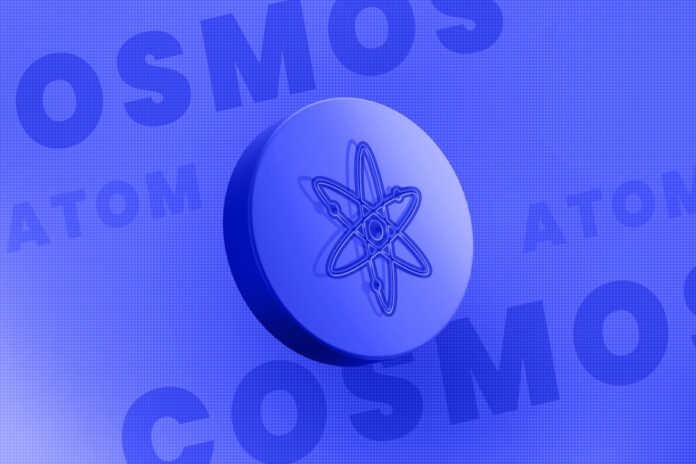On Cosmos Hub, the proposal to reduce the minimum inflation parameter from 7% to 0% for the crypto ATOM has been rejected.
This is the proposal 868, whose voting ended today.
The quorum was 40%, and 48% voted no. Only 25% voted yes, while the others abstained.
Summary
Cosmos: zero inflation on the ATOM crypto
ATOM is the native crypto of the Cosmos ecosystem.
Currently, the minimum inflation parameter for ATOM is 7%, if at least two-thirds of the tokens are staked on the network.
The proposal 868 aimed to bring this parameter to 0%, but with its rejection the minimum inflation will remain at 7%.
This proposal was made in November, after proposal 848 was approved, which set the maximum inflation of ATOM at 10%.
Setting a maximum inflation rate was necessary to encourage staking and ensure network security, but not everyone liked the minimum inflation rate of 7%. In fact, such a minimum rate implies that, theoretically, even if 100% of the tokens were staked, the network would continue to produce an additional 7% of tokens every year.
According to some, such a situation raises some concerns and could even be a unique case in the entire blockchain sector.
Inflation, or the creation of new tokens, serves in this case to reward those who contribute to the security of the chain.
In addition, in a scenario where a significant number of participants were to leave the network, it encourages new participants to join and incentivizes existing stakers to increase their stake.
But if the introduction of consumer chains were to increase revenues, it would make less sense to maintain an annual emission rate of 7%.
It should be noted that we are talking about maximum and minimum inflation rates, so the real one is between the two extremes.
The price of ATOM
In the last 365 days, the supply of ATOM has grown from 326 to 382 million tokens, which is a 17% annual increase, as before the approval of proposal 848 the maximum inflation rate was 20%.
Note that the staking tokens have also increased, going from 204 to 246 million.
It is not surprising, therefore, that the price of ATOM has also dropped during the same period from $13 to less than $9, with a loss of 33%.
Indeed, ATOM’s 2023 was not a particularly happy year in the crypto markets.
The minimum value of the 2022 bear market was around $6, and 2023 started below $10. However, by October 2023, the price had dropped back below $6.3, indicating a substantially negative 2023.
The year ended below $11, and since then it has dropped below $9.
Surely an average annual inflation rate of over 17% has played against, despite a high percentage of immobilized ATOM in staking.
Although it is likely that reducing the maximum inflation rate to 10% will improve this trend, the fact that the minimum inflation rate is still 7% may not be enough to reverse the course.
Furthermore, it should be remembered that even if the minimum inflation rate had been brought to 0%, the maximum rate would still have remained at 10%, so the actual effect on the supply of proposal 868 could still have been minimal.
The Cosmos ecosystem
The goal of the Cosmos project, of which ATOM is the native cryptocurrency, is to create a connected blockchain ecosystem.
In particular, they are trying to create an inter-blockchain communication protocol that makes communication between different networks easy.
The project took its first steps as early as 2014, with the birth of Tendermint, while the whitepaper was published in 2016.
Despite all this time, Cosmos has not yet managed to emerge as an ecosystem that allows communication between the other existing major blockchains.
One of its main competitors is Polkadot, also launched in 2016, and also equipped with its own native cryptocurrency, DOT.
The trend in the crypto markets of the DOT price closely resembles that of ATOM, although DOT’s 2023 has been even more challenging. So it’s not just a matter of inflation, but probably also the fact that these are two projects that have been struggling to emerge for years because they fail to meet the expectations they had promised.
Creating a functional and effective inter-blockchain protocol is proving to be much more difficult than expected, and despite several years of work, a good solution has not yet been reached.
Furthermore, in the meantime, cross-chain solutions, such as wrapped tokens, have gained traction, providing a functioning alternative, despite having significantly lower potential.




